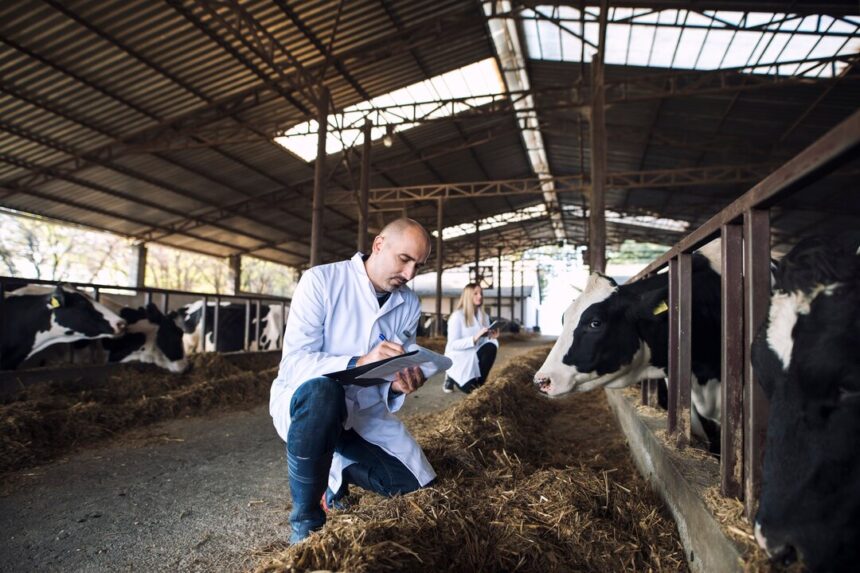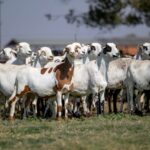The control of animal diseases is vital for maintaining the health of livestock and pets, ensuring food security, and protecting the livelihoods of farmers. Effective disease control requires not only proper management practices but also the use of appropriate veterinary tools and equipment. Here is a comprehensive guide on how to control animal diseases using proper equipment and veterinary tools.
1. Early Disease Detection with Diagnostic Tools
Early detection of animal diseases allows for timely intervention and reduces the risk of outbreaks. Veterinarians and farmers can use tools such as thermometers, blood analyzers, and rapid diagnostic kits to identify diseases early. Advanced tools like portable ultrasound scanners and fecal testing kits also help in detecting internal and gastrointestinal conditions. Regular health screenings with these tools can prevent the spread of infections and improve overall herd health.
2. Vaccination with Reliable Equipment
Vaccination is one of the most effective ways to prevent animal diseases. Using high-quality syringes, needles, and automatic vaccinators ensures accurate and safe administration of vaccines. Farmers should invest in cold chain equipment, such as portable vaccine coolers, to maintain the potency of vaccines during storage and transportation. Adhering to vaccination schedules for diseases like rabies, anthrax, and foot-and-mouth disease protects both animals and humans from zoonotic infections.
3. Proper Medication Administration
Treating sick animals requires accurate delivery of medications. Tools such as drench guns, dosing syringes, and infusion pumps ensure precise dosages of oral and injectable treatments. For livestock, automated delivery systems can improve efficiency when treating large herds. Over- or under-dosing can worsen a disease or cause resistance to antibiotics, so using the right tools is essential for effective treatment.
4. Biosecurity Equipment for Disease Prevention
Biosecurity is key to preventing the entry and spread of animal diseases. Farmers can use disinfectant sprayers, boot baths, and hand sanitizers to maintain clean environments. Equipment such as isolation pens, quarantine units, and fencing helps prevent sick animals from infecting healthy ones. Tools like foot dips and vehicle disinfection systems ensure external contaminants do not spread diseases onto the farm.
5. Regular Monitoring with Surveillance Tools
Advanced surveillance equipment helps farmers monitor the health of their animals in real time. Devices like wearable livestock monitors track body temperature, movement, and feeding patterns, allowing early detection of abnormal behaviors that could indicate illness. Drones and thermal cameras can monitor herds remotely, detecting sick animals quickly and enabling prompt intervention.
6. Surgical Equipment for Critical Interventions
Surgical tools play an important role in managing severe animal health issues. Equipment such as scalpels, sutures, sterilizers, and wound care kits allow veterinarians to perform procedures that save lives and prevent infections from spreading. For instance, castration, dehorning, and abscess drainage require sterilized instruments to avoid secondary infections.
7. Tools for Tick and Parasite Control
Parasites like ticks, mites, and worms can cause severe diseases if left untreated. Farmers can use equipment such as dipping tanks, spraying machines, and pour-on applicators to administer anti-parasitic treatments effectively. Tools like fecal egg count kits allow for monitoring internal parasites, while fly traps and ear tags help control external pests.
8. Maintaining Proper Sanitation with Cleaning Tools
Clean environments are essential for disease prevention. Using pressure washers, disinfectant sprayers, and manure-handling equipment helps maintain hygiene in animal shelters. Regular cleaning of feeding troughs, water containers, and pens reduces the risk of contamination and the spread of pathogens.
9. Record-Keeping and Data Tools
Keeping accurate health records is often overlooked but is crucial for disease control. Tools like digital herd management software and health logs allow farmers to monitor vaccination schedules, disease outbreaks, and treatment plans. This data can help identify disease patterns, evaluate intervention success, and ensure compliance with veterinary recommendations.
10. Training and Use of Proper Protective Equipment (PPE)
Farmers and animal handlers need to be trained on how to use veterinary tools effectively. Additionally, using proper personal protective equipment (PPE) such as gloves, masks, and overalls minimizes human exposure to infectious diseases. Proper training and PPE help reduce risks to both animals and farmers.
Controlling animal diseases requires a combination of vigilance, proper equipment, and the right veterinary tools. From diagnostic devices and vaccination equipment to surveillance tools and sanitation gear, using the right tools at the right time can prevent disease outbreaks and improve animal health. South African farmers who invest in modern tools and adopt best practices in animal health management will protect their livestock, secure their livelihoods, and contribute to a healthy, sustainable farming sector.
Join 'Farmers Mag' WhatsApp Channel
Get the latest Farming news and tips delivered straight to your WhatsApp
CLICK HERE TO JOIN






